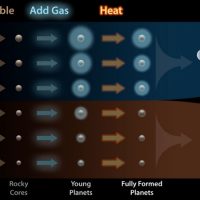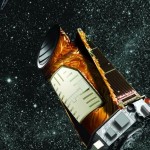W. M. Keck Observatory press release…
Since the mid-1990s, when the first planet around another sun-like star was discovered, astronomers have amassed an ever-expanding collection of nearly 3,500 confirmed exoplanets.

“This is a major new division in the family tree of planets, analogous to discovering that mammals and lizards are distinct branches on the tree of life,” says Andrew Howard, professor of astronomy at Caltech and a principal investigator of the new research.
The lead author of the new study, to be published in The Astronomical Journal, is Benjamin J. (B. J.) Fulton, a graduate student in Howard’s group.
In essence, their research shows that our galaxy has a strong preference for either rocky planets up to 1.75 times the size of Earth or gas-enshrouded mini-Neptune worlds, which are from 2 to 3.5 times the size of Earth (or somewhat smaller than Neptune). Our galaxy rarely makes planets with sizes in between these two groups.
“Astronomers like to put things in buckets,” says Fulton. “In this case, we have found two very distinct buckets for the majority of the Kepler planets.”
Continue reading “Unexpected Classification of Exoplanets Discovered”

